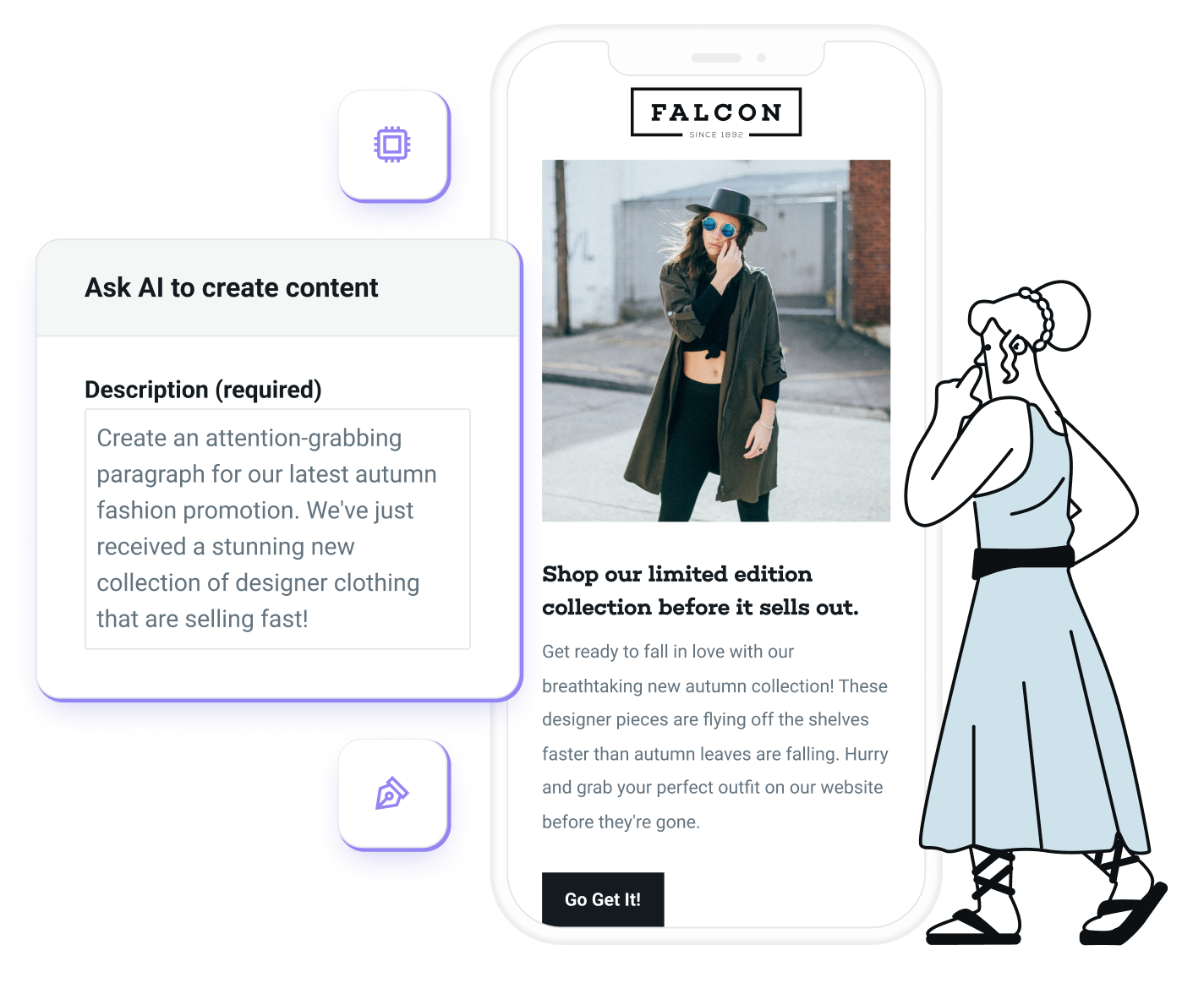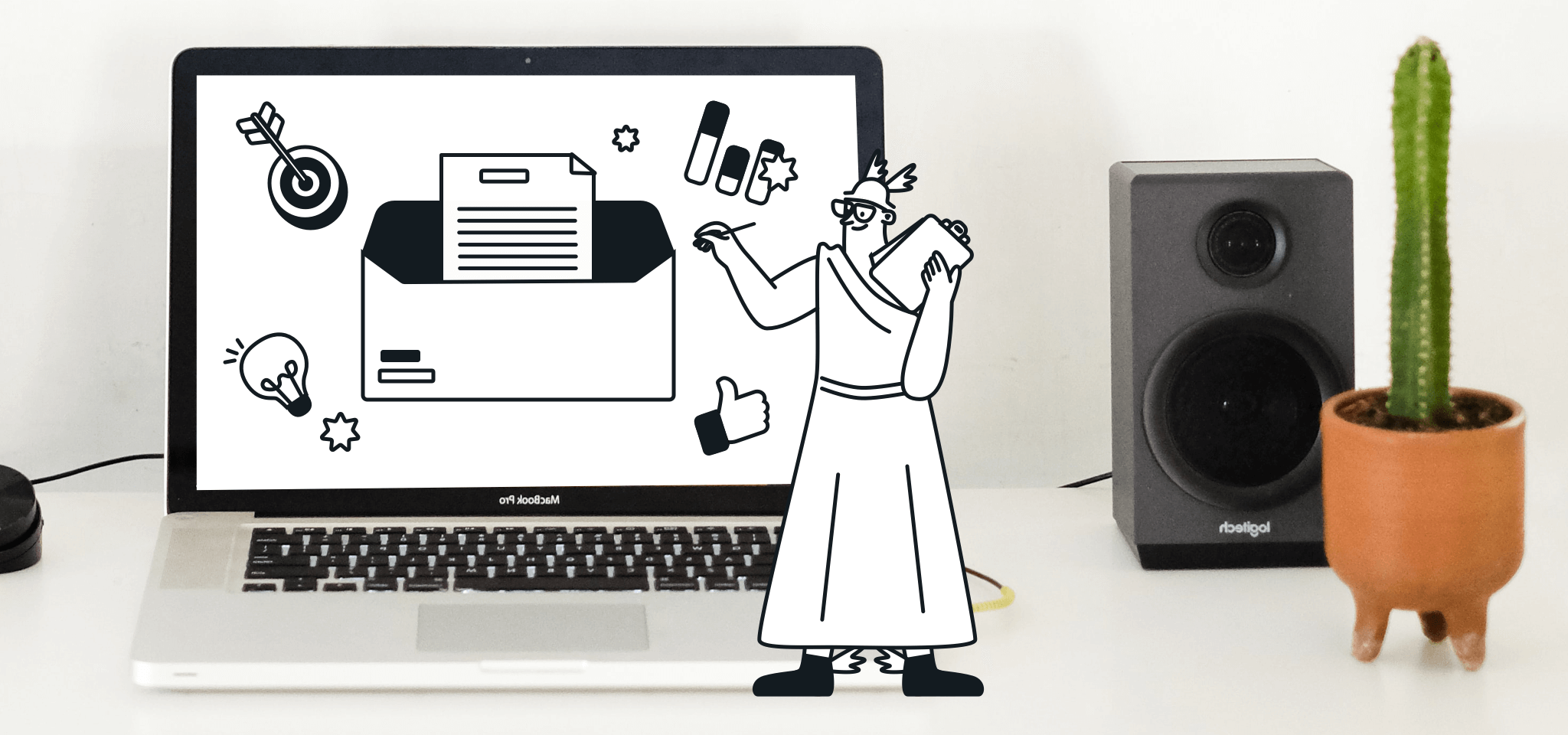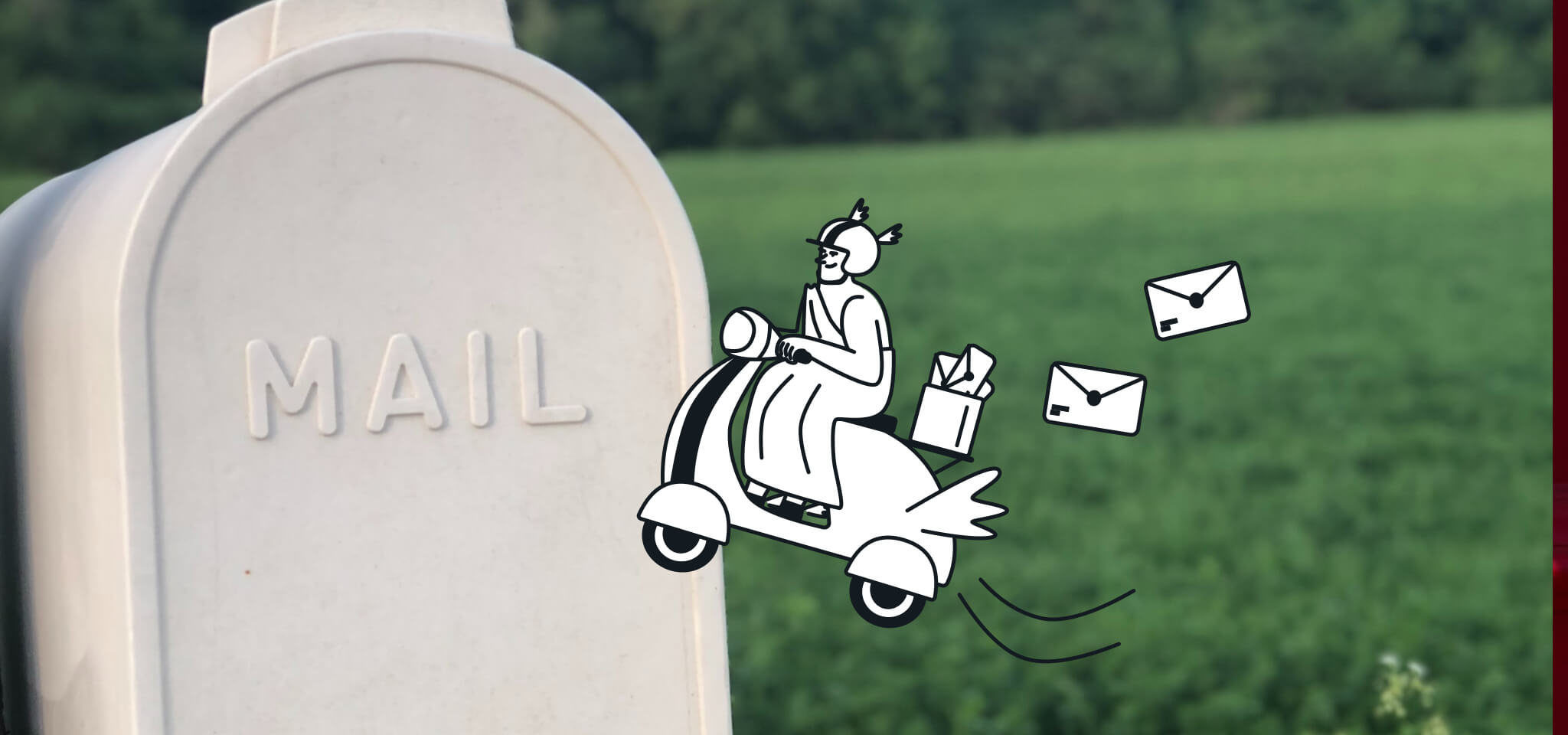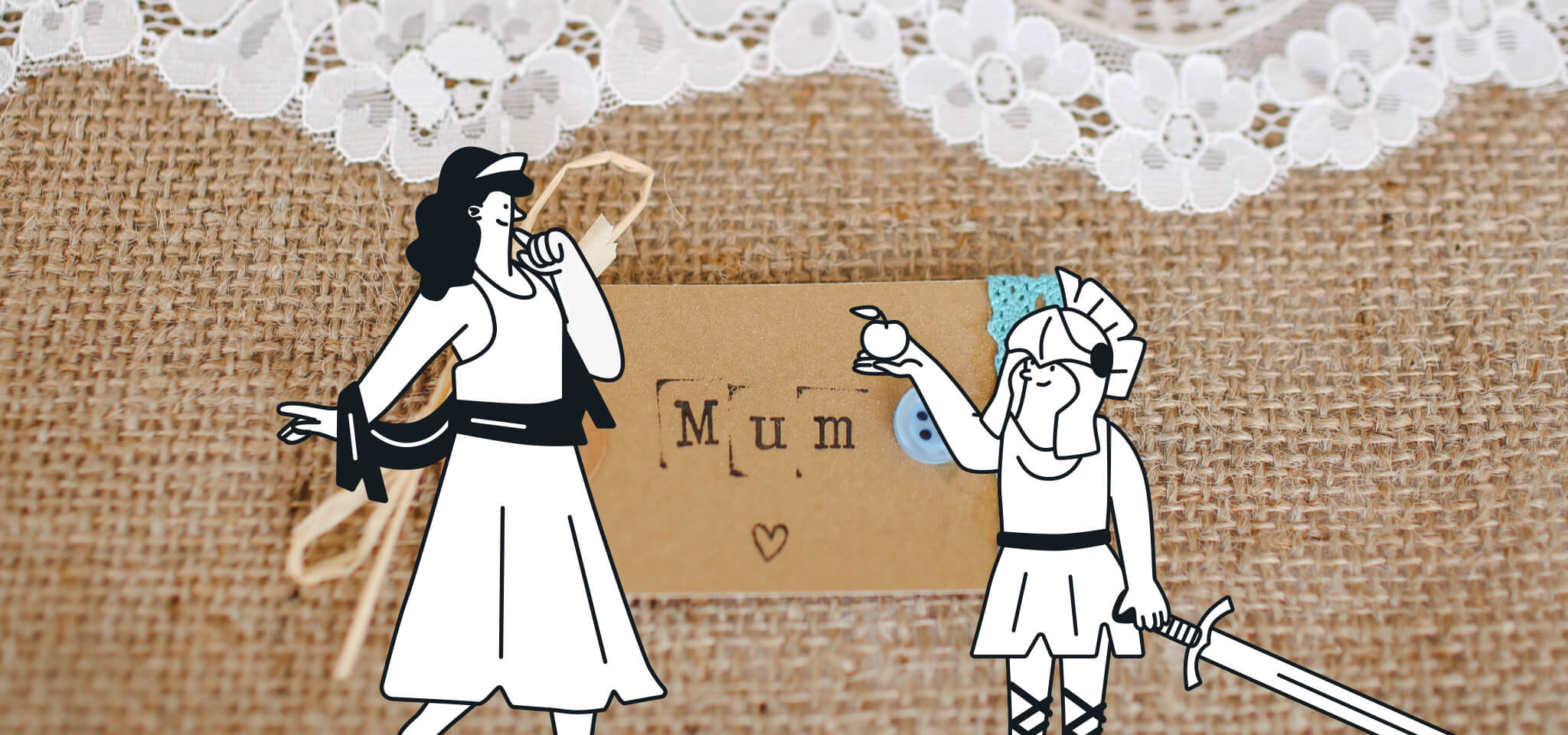Email best practices
8 email marketing trends to watch in 2025
Wondering what the world of email will look like in 2025? We've asked the experts and we’re ready to share their insights with you. Check out these email marketing trends for 2025 and get your email program ready for the year ahead!

PUBLISHED ON
The digital landscape never stops evolving, and marketing channels are no exception. But let’s be honest – when it comes to change, email marketing isn’t the most innovative of the lot. No, email is that tried-and-tested companion we go back to once the excitement of the latest trend dies off.
Does that mean we won’t see change for email in 2025? Absolutely not. While this might not be the year email undergoes a radical revolution, we still expect some exciting changes in email marketing over the next 12 months.
From inbox security upgrades to campaigns that save the planet, we’re ready to break down the email marketing trends that will shape 2025. Let’s dive in – because the future waits for no one, not even email.
Table of contents
Table of contents
01Increased efficiency and creativity from AI
02Stricter authentication requirements for better email security
03Stronger focus on domain reputation
04More precise email tracking to adapt to the surge of bot clicks
05Changes in email creation to adapt to Apple Intelligence
06Increased focus on accessibility in the inbox
07Smaller, greener, and more sustainable email marketing
Increased efficiency and creativity from AI
Artificial intelligence (AI) is no longer the lovable sidekick in the email marketing saga. No, AI is ready to enter its lead protagonist era. In 2025, AI will be the not-so-secret weapon for creating smarter and faster email campaigns – like having a genius creative team and a data-driven strategist rolled into one.
As AI tools get better, AI-powered creative generation is redefining how we craft campaigns, helping senders build more targeted emails in less time. AI features can now write compelling copy, design templates that hit the sweet spot, create hyper-personalized content, and produce compelling subject lines that just beg to be opened.

Optimize your email content creation with Sinch Mailjet’s generative AI tools
But beyond creativity, AI is a powerhouse for improving efficiency, with some studies showing that Gen AI tools can yield productivity gains of as much as 30%.
In 2025, marketers will rely even more on AI tools to automate repetitive actions and simplify complex tasks like segmentation or performance tracking so they can focus on strategy. The result? Faster campaign rollouts, more effective targeting, and a serious boost for businesses' bottom line.
Pro tip: Let machines handle the grunt work while you focus on growing the business. Combine email-specific tools like Sinch Mailjet’s AI Copy Generator with well-known resources like ChatGPT to craft emails that speak directly to each customer’s preferences.
Stricter authentication requirements for better email security
We’ve all seen it in our inboxes – cyber threats are on the rise and mailboxes are the main target. Distinguishing between which emails are real, and which ones are not is getting harder.
“Keeping email more secure, user friendly, and spam-free requires constant collaboration and vigilance from the entire email community.”
Neil Kumaran, Gmail’s Security & Trust lead
This surge of cyberattacks has made email authentication non-negotiable. In 2024, Gmail and Yahoo announced stricter standards for bulk senders, enforcing SPF, DKIM, and at least some form of DMARC authentication.
Authenticated emails aren’t just safer—they’re likelier to land in primary inboxes and win recipients’ trust. According to Sinch Mailgun’s State of email deliverability in 2025 report, two thirds of senders are now using both SPF and DKIM authentication methods, and more than half of respondents have now adopted DMARC – 11% more than in 2023.
In 2025, we expect to see even greater pushes for stricter email security – with a shift towards a p=reject policy in DMARC and increased adoption of additional protocols like BIMI, encouraging senders to prioritize authentication for inbox placement and brand reputation.
“The end goal is ideally a policy of p=reject. That's what DMARC is for. Ensuring that your domain cannot be spoofed and protecting our mutual customers from abuse.”

Marcel Becker
Sr. Director of Product Management at Yahoo
Stronger focus on domain reputation
In 2025, we expect to see domain reputation step into the spotlight as the key to inbox success. Both Gmail and Yahoo have already laid the groundwork with their 2024 requirements, which emphasize domain-based signals like the rising importance of DMARC authentication.
The message the “Yahoogle” changes sent is clear: Domains are the future of email trust. Shared IPs, especially those tied to cloud-based services, have made IP reputation less dependable as a solo measure. Domains, by contrast, are tightly linked to brand identity and give mailbox providers a better way to evaluate sender practices.
Does this mean IP reputation is disappearing? No, but it’s increasingly pivoting its role from main act to supporting character.
"The reason you want to focus on improving your domain reputation is because when you improve your domain reputation, it lifts all other KPIs and metrics related to email marketing. Everything gets better as you improve your domain reputation."

Tyler Cook
Head Email Marketer at Hypermedia Marketing
Cracking the code to great domain reputation isn’t rocket science. Heading into 2025, senders need to double down on some of the deliverability basics, including solid email authentication, sharp-eyed monitoring of key metrics like spam complaints and open rates, and strong email list hygiene. Focusing on email relevancy and incorporating strategies like engagement-based segmentation will also help boost positive signals, which are critical to a strong domain reputation.
Want to learn more about how to fix a damaged domain reputation? Check out Tyler Cook’s Email Camp 2024 session, “Attitude adjustment: Rehabilitating your domain reputation.”
More precise email tracking to adapt to the surge of bot clicks
For quite some time now, the email community has been questioning the accuracy of open rates as a success indicator due to the rise of privacy features that masked IP engagement. In the last few years, many in the industry have suggested click-through rates as a more reliable metric.
Enter bot clicks, and email marketers are being forced to rethink how they measure success in 2025.
Imagine launching a campaign and seeing a spike in clicks. Exciting, right? Not so fast. More and more, these surges are typically the result of automated bots – not necessarily eager recipients. Bot clicking is often deployed by corporate security systems to pre-check links for safety, an added measure to protect businesses from cyberattacks. But as these tactics become more common, the life of email marketers – especially in B2B – is getting more challenging, with bots making it harder to distinguish genuine engagement from artificial noise.
In 2025, senders will need to find new ways to get a transparent view of their campaign performance. There are several strategies that can help marketers differentiate between human interactions and automated clicks: focusing on alternative metrics like conversions from email, implementing bot traps, or using email tools for bot detection. Getting it right will be critical to ensure these engagement statistics reflect the real story.
“With the rise of cyberattacks via email, many companies are introducing security measures to check emails before they hit the inbox, like software that clicks every link to ensure they are safe. This is obviously a challenge for B2B marketers, who see their click rates skyrocket due to bot clicks. Senders are going to have to learn how to work around that, adding bot traps to emails or using tools that exclude this kind of click activity.”

Julia Ritter
Sr. Email Marketing Manager at Sinch
Changes in email creation to adapt to Apple Intelligence
The launch of iOS 18.1 has transformed Apple Mail into an AI powerhouse – all thanks to Apple Intelligence, the company’s cutting-edge AI tool. Its smarter features designed to streamline inboxes are set to revolutionize the email experience for users – and email senders.
Earlier this year, Apple Mail incorporated two Gmail-inspired features into its ecosystem: Priority Messaging and Tabs. These features will organize messages based on urgency, importance, and category, forcing marketers to apply some of the same principles that help emails stand out in Gmail inboxes.
However, the standout feature of this update is AI Summaries, which distills lengthy emails and threads into bite-sized highlights. In 2025, marketers will need to rethink their approach to email creation, focusing on attention-grabbing subject lines, sharp opening sentences, and ultra-relevant content if they want their campaigns to shine in a world ruled by summarized emails.

Apple Mail’s inbox just got an AI boost from Apple Intelligence (Source: Apple)
Fewer distractions in the inbox mean more potential impact for well-crafted emails, but only if they align with Apple’s AI logic. Success in email in 2025 will require additional focus on delivering true value that grabs attention – AI and human alike.
Increased focus on accessibility in the inbox
Accessibility has been a hot topic among the email community for quite some time, yet it’s still far from the norm. In fact, 99.9% of emails analyzed in the Email Markup Consortium’s Accessibility Report 2024 contained “Critical” or “Serious” accessibility issues.
Some of the problems identified are caused by the lack of standardization across email clients or insufficient accessibility tools – but not all of them. The EMC found that four out of the ten top issues are actually addressable by any email marketer, regardless of the tools they’re using. In many cases, the main culprit is misinformation and lack of email education, like the recent trend pushing for all-image templates.
“Lately, I’ve heard people in the email world suggesting all-image emails, but honestly, that’s a pretty bad idea. Screen readers can’t read the text, and images don’t always work well on mobile, making it tough to read on smaller screens. Plus, AI tools like Apple Intelligence can’t summarize the content of all-image emails effectively. The good news is you can create almost any design you want with a well-coded template, and it’s way quicker than going back and forth with a designer.”

Megan Boshuyzen
Sr. Email Developer at Sinch
Luckily, email accessibility – and accessibility as a whole – is slowly but steadily becoming an expectation in digital spaces, thanks to a rise in awareness and specific legal initiatives across different regions. In the UE, the European Accessibility Act (EAA), effective from June 28, 2025, mandates that all digital products and services are accessible to all individuals, particularly those with disabilities. And that includes emails.
In 2025, we expect to see senders paying closer attention to accessibility best practices, including the use of alternative text on images, greater focus on color contrast, and increased adoption of semantic HTML in email design. Ensuring emails are legible in dark mode will also become a priority, as will the use of tools for email accessibility testing tools, like Sinch’s Email on Acid.
Get ready to make your emails more accessible by watching the Email Markup Consortium’s session at Sinch Mailjet’s Email Camp 2024!
Smaller, greener, and more sustainable email marketing
Sustainability is taking center stage across different industries, and email marketing is no exception.
According to a study, a single email emits anything between 0.3 and 26 grams of CO₂. Attach a photo, and it gets even higher. If you multiply that by the billions of emails sent daily, the environmental cost becomes clear. Organizations like Zero Carbon Email, who’s behind the Email Expiration Date initiative, have been trying to educate the community around the email’s carbon footprint for quite some time now.

In 2025, we expect eco-consciousness to reshape how we design, send, and manage emails. Marketers will embrace practices that reduce the environmental impact of their email programs – from greener data storage practices to changes in design and sending habits to lower the energy consumed in delivering and reading emails.
Strategies like opting for smaller images, building lighter email templates, cleaning contact lists, reducing the number of emails sent, and even setting expiration dates on messages will be top of mind as companies push to achieve their sustainability goals.
“While the simplest and most effective methods [to reduce the carbon footprint of the email marketing industry] are to reduce the volume of emails sent and to lighten their weight, it is interesting to note that billions of commercial emails are stored indefinitely in data centers around the world. This project aims to reduce the increase in the volume of these messages stored for nothing.”
The Email Expiration Date initiative
More omnichannel integration in customer communications
Let’s face it – if brands want to connect meaningfully with their customers, embracing an omnichannel communication strategy is essential. With more than 78% of people now preferring to receive brand promotions across multiple channels, marketers need to step up their game and start meeting audiences across multiple touchpoints.
There’s no question email will continue to lead the charge in 2025, but the real magic will happen when businesses incorporate SMS, RCS, and other conversational channels to their communications mix. By blending these channels thoughtfully, brands can deliver cohesive, timely messages that keep customers engaged, wherever they are.
Looking to 2025, the winning formula will be all about alignment, with a stronger focus on smart strategies where customer communication preferences are front and center. Like we said, email will remain the cornerstone of these efforts, but SMS and chat apps will be key to amplify engagement during crucial moments, from time-sensitive promotions to personalized transactional updates.
Hear from Kate Nowrouzi, VP of Deliverability & Product Strategy at Sinch, on how top brands are reaching their customers via omnichannel messaging.
So, what’s next in 2025?
We know – keeping up with the latest email trends can feel overwhelming.
But here’s the thing: You don’t have to do it all at once. The key to a strong email marketing strategy lies in testing, experimenting, and embracing your creativity and innovation. All you need is the right email expertise and the best tools in the market to make your emails shine.
Sinch Mailjet’s platform offers a suite of easy-to-use tools to support you every step of the way, making email creation faster and allowing you to build campaigns that drive meaningful results in no time. From managing your contact lists and designing impactful templates to tracking and optimizing performance, Sinch Mailjet’s email platform has everything you need to hit the inbox.
Plus, the Sinch Mailjet team is on a mission to share our email expertise with the world! Keep an eye on our blog, check out our resources, and subscribe to our newsletter to stay in the email loop.








